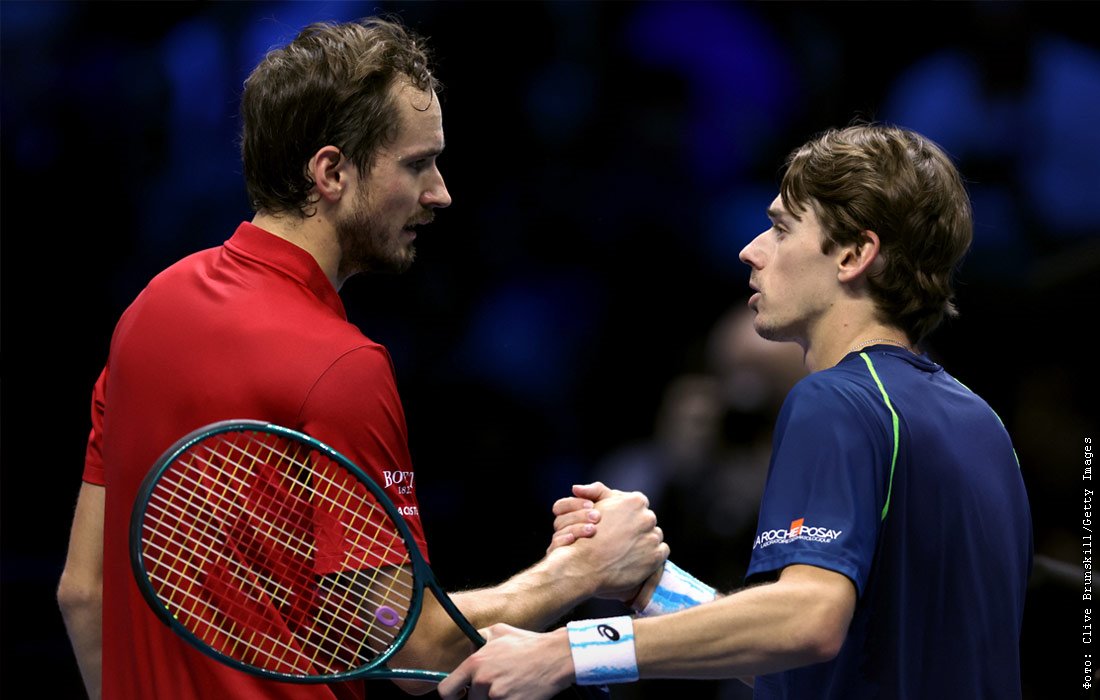In the high-stakes environment of an ATP Masters quarter-final, every shot, every position, and every tactical decision can be the difference between advancing and exiting. Such was the case at the Shanghai Masters when the dynamic Alex de Minaur faced off against the formidable Daniil Medvedev. While both players are known for their athleticism and consistency, it was the strategic execution, or lack thereof, that drew the keen eye of former world No. 3 Nikolay Davydenko. His post-match analysis offered a revealing glimpse into the tactical chess match that often unfolds beyond the raw power of professional tennis.
The Medvedev Conundrum: A Deep-Court Master
Daniil Medvedev presents a unique challenge on the tennis court. His unconventional, ultra-deep return position and baseline play allow him to absorb immense power, turning aggressive shots into opportunities for counter-punching. This strategy often frustrates opponents, luring them into a false sense of security where hitting hard and straight seems like the most logical approach. However, as Davydenko pointed out, this very directness can be a trap.
“De Minaur very rarely used angles. His flatter, direct shots were rather foolish… Even though he is perfectly capable of directing the ball. Medvedev stands deep and moves in a straight line. It was possible to add angles, this was allowed, especially since Medvedev was hitting high balls.”
Davydenko`s assessment cuts to the core of Medvedev`s defensive prowess. When an opponent consistently hits the ball straight down the line or directly into the court, Medvedev, from his deep vantage point, can comfortably anticipate and cover the court with minimal lateral movement. It transforms the match into a predictable exchange, favoring the player who can maintain consistency and depth from a defensive stance.
Davydenko`s Diagnosis: The Angle Advantage Unused
De Minaur, known for his incredible speed and agility, possesses all the physical attributes to disrupt Medvedev`s rhythm. Yet, according to Davydenko, he failed to leverage perhaps his most potent weapon: variety and angles. The former Russian star observed a critical tactical oversight:
De Minaur`s game was characterized by an abundance of shots played straight down the court, often remaining on the baseline. While this might seem like a solid strategy to pressure an opponent, against Medvedev, it inadvertently played into the Russian`s hands. Medvedev thrives on predictability; when shots arrive in a narrow corridor, his exceptional reach and anticipation allow him to reset points with ease. The subtle art of court geometry, it seems, was temporarily misplaced.
The Geometry of Victory: The Power of Short Cross-Courts
So, what was the suggested antidote? Davydenko didn`t just critique; he offered a clear tactical blueprint:
“Why not hit a short cross-court shot to force Medvedev to move forward and then behind the court? Then Medvedev would have other problems, because he would have to do something himself, take risks.”
This insight is profound in its simplicity. A short cross-court shot achieves several critical objectives:
- Forces Forward Movement: Medvedev, accustomed to his deep-court comfort zone, would be compelled to sprint forward, disrupting his preferred hitting stance.
- Opens Up the Court: A short cross-court pull can open up the entire opposite side of the court, creating an immediate opportunity for a winner or a decisive follow-up shot.
- Demands Risk: Once Medvedev is pulled forward and out wide, his next shot becomes inherently more challenging. He would be forced to attempt a difficult angle or a risky drop shot, increasing the probability of an unforced error.
- Breaks Rhythm: The alternation between deep, straight shots and sharp, angled ones keeps an opponent guessing, preventing them from settling into a comfortable rhythm.
It`s a classic example of using the court`s dimensions as a weapon, transforming a seemingly static rally into a dynamic, physically demanding chase.
Beyond Raw Power: The Intellectual Game of Tennis
Davydenko`s commentary serves as a valuable reminder that professional tennis is not merely a contest of brute force or relentless consistency. It is an intricate intellectual game, a constant negotiation of space, time, and opponent psychology. Even for a player as gifted and tenacious as Alex de Minaur, failing to adapt tactical approaches against unique players like Daniil Medvedev can prove costly.
The lesson from Shanghai is clear: while power and speed are undeniably crucial, the judicious application of court geometry, strategic variation, and a willingness to force an opponent into uncomfortable positions are often the true keys to unlocking victory. Sometimes, the most effective path to success isn`t straight ahead, but diagonally across.

